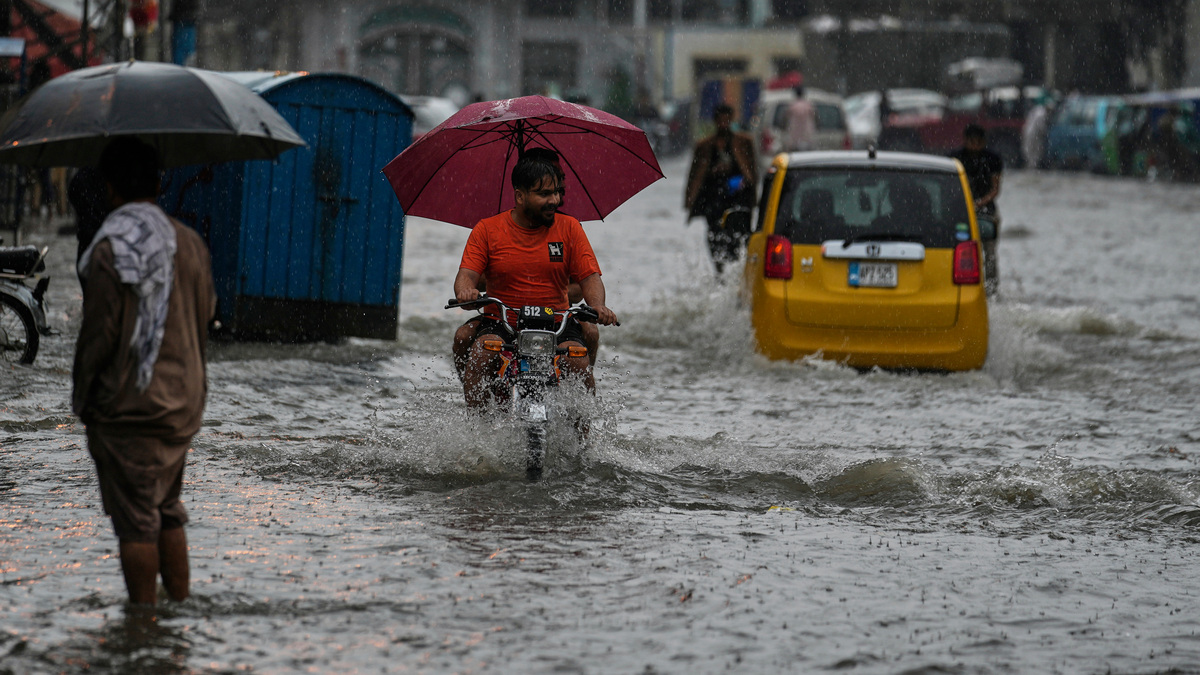Pakistan is experiencing deadly floods yet again.
Dozens have been left dead and hundreds injured in floods in Pakistan’s Punjab province.
Across the country, nearly 200 have died since the monsoon began in late June.
Over half of the dead are children.
But what happened? Why are deadly floods in Pakistan such a common occurrence?
Let’s take a closer look:
What happened?
Fresh rains in Pakistan’s Punjab province that began on Wednesday have left at least 60 dead and nearly 300 wounded.
Most people have been killed in Punjab and Khyber Pakhtunkhwa.
Most were crushed by buildings, while others drowned or were electrocuted.
Authorities in Rawalpindi have declared a holiday and urged people to stay home.
Those near a river in the city have been asked to evacuate.
The most affected area was Chakwal, a salt range area of the province, around 300 kilometres from Lahore.
The area receiving 423 mm of rain in the last 24 hours leading to floods in the area, the authorities said.
“A rescue operation is underway in Chakwal to evacuate people trapped by flash floods, with support from the military and local administration,” the Provincial Disaster Management Authority (PDMA) said.
Military helicopters have also been spotted in Chakwal.
Several expressways have been submerged. Dozens of flights have been delayed or cancelled.
Authorities have declared a ‘rain emergency’ in different parts of the province including in Rawalpindi.
All relevant departments including the district administration, police, and Rescue 1122 have been fully mobilised across the province to protect citizens from the worsening flood situation,” a Punjab government statement said.
“Hospitals have been placed on high alert, and both field hospitals and other medical facilities have been instructed to remain fully prepared to assist citizens,” it added.
Pakistan Meteorological Department (PMD) has warned that yet another monsoon system is set to hit Khyber Pakhtunkhwa in the next few days.
Punjab province will likely receive heavy showers.
Lahore, the capital city of Punjab, was severely waterlogged last week.
Some low-lying areas also faced power cuts.
Why are deadly floods in Pakistan such a common occurrence?
Pakistan, along with India, is said to be one of the countries most vulnerable to climate change .
As Pakistan’s Biennial Transparency Report, submitted to the United Nations Framework Convention on Climate Change (UNFCCC), states, “Pakistan has been ranked as the most climate-vulnerable country globally in 2025, bearing immense social and economic costs from recurring climate-induced disasters…”
Though it contributes a mere half a percentage point to the world’s greenhouse emissions, people in Pakistan are over a dozen times more likely to die of climate-related disasters.
The country has two major weather systems – one that brings high temperatures and drought and the other that results in monsoon rains.
Like other South Asian nations, Pakistan gets a majority of its rainfall during the monsoon season.
This season occurs from late June to September.
However, this year, extreme heat in Gilgit-Baltistan, which is home to thousands of glaciers including several of the world’s most important ones, is making things worse.
For the unversed, Gilgit-Baltistan is known as the “third pole”.
The Pakistan Meteorological Department has said that parts of in Gilgit-Baltistan have witnessed temperatures above 48 degrees Celsius.
This, despite being around 1,200 metres above sea level.
The country itself is home to over 13,000 glaciers.
The temperatures have caused glaciers to melt this year, increasing the risk of flooding.
Zakir Hussein, director general for Gilgit Baltistan’s disaster management authority, told Al Jazeera, “Given the rise in temperatures and anthropogenic climate change, the fragile ecosystem in Gilgit Baltistan is facing imminent flash flooding and risk of Glacial Lake Outburst Flood (GLOF) – a type of flood caused by the sudden release of water from a glacial lake.”
What do experts say?
Experts blame government inaction for the deaths and damage.
They point the finger at poor planning when it comes to building homes and infrastructure.
The UN Habitat’s 2023 report notes that “over 50% of the urban population lives in slums or informal settlements known as katchi abadis.”
Ali Tauqeer Sheikh, an Islamabad-based climate expert, told Al Jazeera, “I cannot think of a single policy reform that the government has taken after the 2022 floods, despite all the tall claims made by the ministers and other officials. Internal-focused driven reforms to enhance the preparedness of communities in vulnerable areas is completely missing,” he said.
“We are a reform-averse society, and we don’t want to undertake any change that is substantial in nature, and this attitude only perpetuates vulnerabilities”.
Many continue to build homes on the banks of rivers.
In 2022, monsoon floods left a third of the nation underwater.Around 1,700 people died and nearly an eight of the population, around 30 million people, were displaced.
The floods caused damage worth an estimated $30 billion – including $14.8 billion to property and the rest to Pakistan’s gross domestic product (GDP).
In 2023, the United Nations Secretary-General Antonio Guterres said other nations had a ‘moral obligation’ to assist in Pakistan’s recovery.
Guterres said the country is “doubly victimised" by climate change as well as a “morally bankrupt” financial system.
With inputs from agencies


)

)
)
)
)
)
)
)
)



